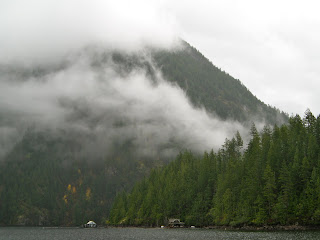Woodstove Smoke Blow Back Solution

 Last December, I shared a solution to our wood stove smoke blow back and downdraft problems. Our friend John found a wind protection chimney cap at RONA. As long as the wind was less than 15 kph (9 mph), our wood stove worked fine. But if a stiff breeze came up, especially a southeast wind, smoke was forced back down the chimney and into the cabin. It sometimes got so bad we had to stop using the stove (hard to do if there was wood burning) and start up our Big Buddy propane heater.
Last December, I shared a solution to our wood stove smoke blow back and downdraft problems. Our friend John found a wind protection chimney cap at RONA. As long as the wind was less than 15 kph (9 mph), our wood stove worked fine. But if a stiff breeze came up, especially a southeast wind, smoke was forced back down the chimney and into the cabin. It sometimes got so bad we had to stop using the stove (hard to do if there was wood burning) and start up our Big Buddy propane heater.

Last week we had strong 24 kt (47 kph/29 mph) winds during a passing weather system. The result was much different than our previous chimney cap. After about six hours of strong, gusty winds, there was only one small blow back of smoke through the wood stove door. Here's a video of our new chimney cap in action.
 The only problem we've encountered is some smoke escaping from the stove while lighting a fire during light breezes. Sometimes we use a long pole to manually move the cap to point into the wind. If it's a very light breeze, burning a twisted piece of newspaper under the smoke shelf before lighting the kindling is enough to start a draw up the chimney pipe. That usually does the trick.
The only problem we've encountered is some smoke escaping from the stove while lighting a fire during light breezes. Sometimes we use a long pole to manually move the cap to point into the wind. If it's a very light breeze, burning a twisted piece of newspaper under the smoke shelf before lighting the kindling is enough to start a draw up the chimney pipe. That usually does the trick.
So, if you are looking for a solution to a smokey woodstove, try a new Revolving Weather Cap. -- Margy



















































